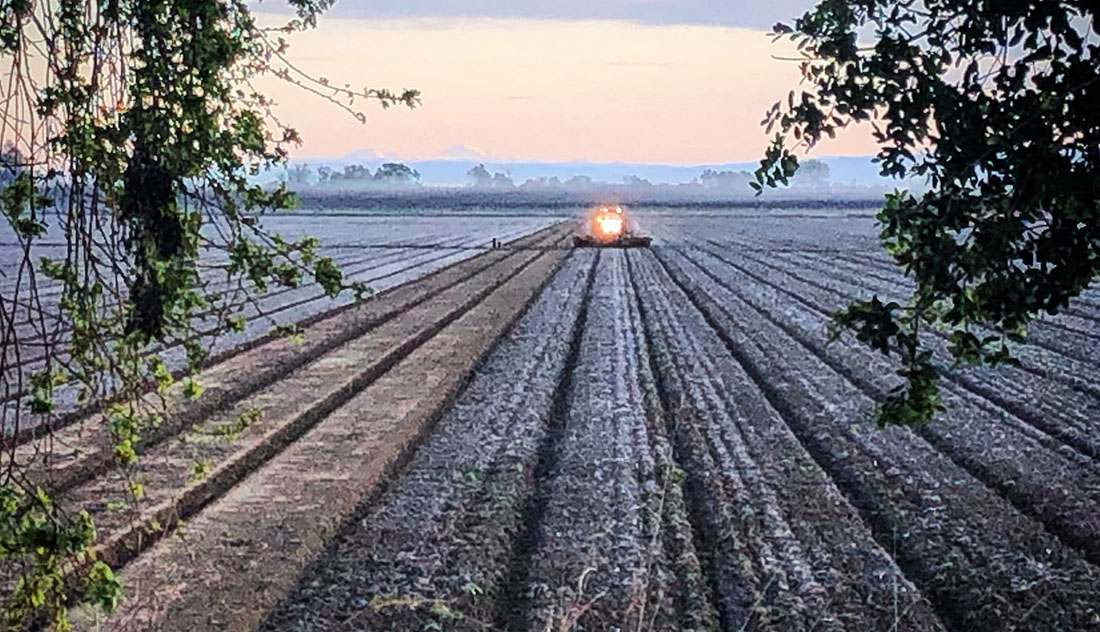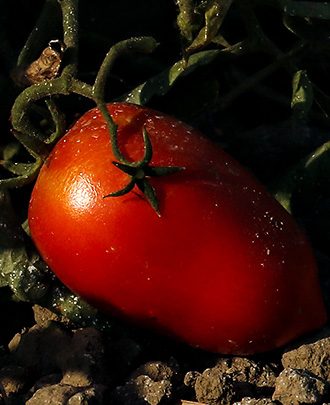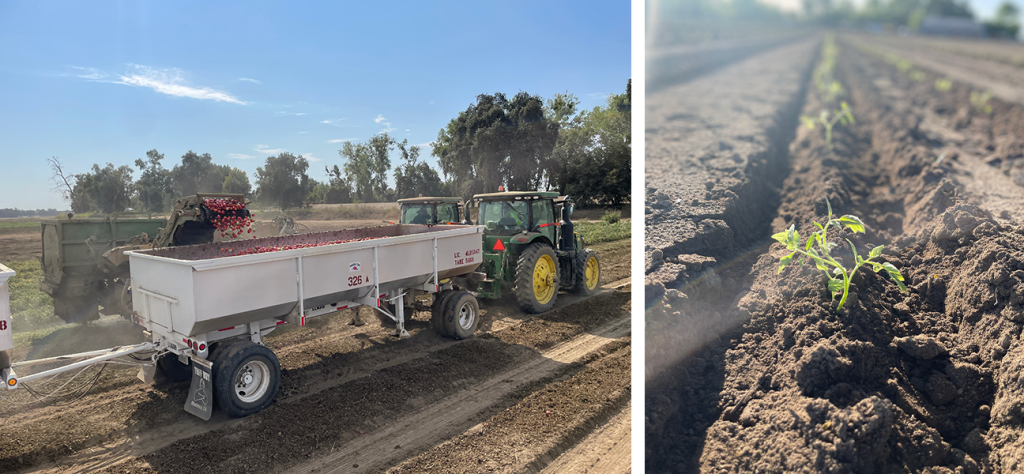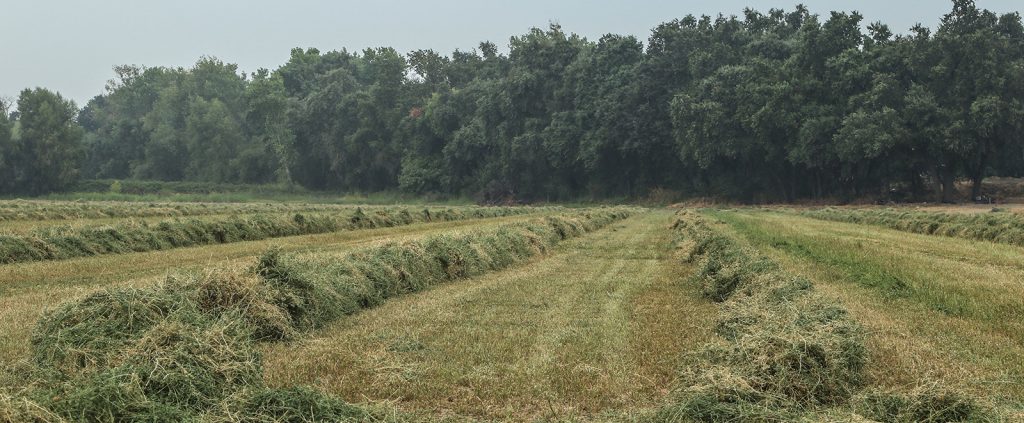Row Crops

Crop Rotation for Enhanced
Sustainability and Soil Health
 At Richter AG, we dedicate 1,000 acres of our land to row crops, with processing tomatoes as our primary focus. To optimize production, we rotate a variety of crops every few years. This practice not only strengthens our ability to cultivate high-quality tomatoes but also helps control a range of weeds, soil health, and plant-borne diseases. By rotating crops, we create a balanced and symbiotic relationship where the cultural practices of one crop improves the productivity of another.
At Richter AG, we dedicate 1,000 acres of our land to row crops, with processing tomatoes as our primary focus. To optimize production, we rotate a variety of crops every few years. This practice not only strengthens our ability to cultivate high-quality tomatoes but also helps control a range of weeds, soil health, and plant-borne diseases. By rotating crops, we create a balanced and symbiotic relationship where the cultural practices of one crop improves the productivity of another.
Our primary rotation crops include corn, wheat, and alfalfa. Depending on market conditions, we may also incorporate sunflowers, garbanzo beans, or grass hay into our rotation system, allowing us to maintain sustainability and adapt to changing agricultural needs.
Tomatoes
 Our most important row crop is tomatoes, which we cultivate with great care and precision. After the last frost, typically between March and May, tomato seedlings that were started in indoor nurseries are transplanted into the field. At Richter AG, we utilize a unique 80-inch bed culture, an approach that supports optimal plant spacing and allows us to continuously explore innovative methods to improve yields.
Our most important row crop is tomatoes, which we cultivate with great care and precision. After the last frost, typically between March and May, tomato seedlings that were started in indoor nurseries are transplanted into the field. At Richter AG, we utilize a unique 80-inch bed culture, an approach that supports optimal plant spacing and allows us to continuously explore innovative methods to improve yields.
Harvest season typically begins in early August and extends through October, with peak production often occurring in September, depending on the year’s climate conditions. Once harvested, the tomatoes are promptly delivered to a nearby processing facility, where they are transformed into tomato paste. This paste serves as the foundation for a wide variety of popular products, including ketchup, tomato sauce, pizza and pasta sauce.

Alfalfa
One of our key rotation crops is alfalfa, which is typically planted in the fall or early winter. Alfalfa is a high-yield crop, cut and baled 4 to 6 times per season, depending on growing conditions. With proper management, an alfalfa field remains productive for 3 to 5 years before being rotated back to tomatoes. Its nitrogen-fixing capabilities play a critical role in enriching soil fertility, while its dense growth helps suppress weeds and reduces the risk of fungal diseases in subsequent tomato crops.
At Richter AG, we prioritize producing high-quality alfalfa hay, with a focus on achieving high Total Digestible Nutrients (TDN) and high protein content. Our alfalfa hay is primarily marketed to dairy and horse farms, where buyers demand the finest nutrition and consistency for their livestock.

Corn
Field corn is a vital component of our crop rotation system, offering significant agronomic benefits. Its deep-rooted growth helps to break up compacted soil layers, improving soil structure and water infiltration. Corn’s vigorous growth also competes effectively with weeds, reducing the weed seed bank for future crops. After harvest, the substantial biomass left behind contributes organic matter to the soil, enhancing soil fertility and overall health.
Although we follow alfalfa directly with tomatoes, the benefits of nitrogen fixation from the alfalfa crop indirectly complement corn’s high nitrogen demands in subsequent rotations. The nutrients restored by rotating crops like alfalfa help create an enriched soil environment, which benefits future corn crops, ensuring higher yields and healthier fields.
Corn also helps break pest and disease cycles that might affect our other crops, making it a key part of our sustainable farming practices. By incorporating field corn into our rotations, we promote long-term soil conservation, nutrient cycling, and improved productivity across all of our crops.
